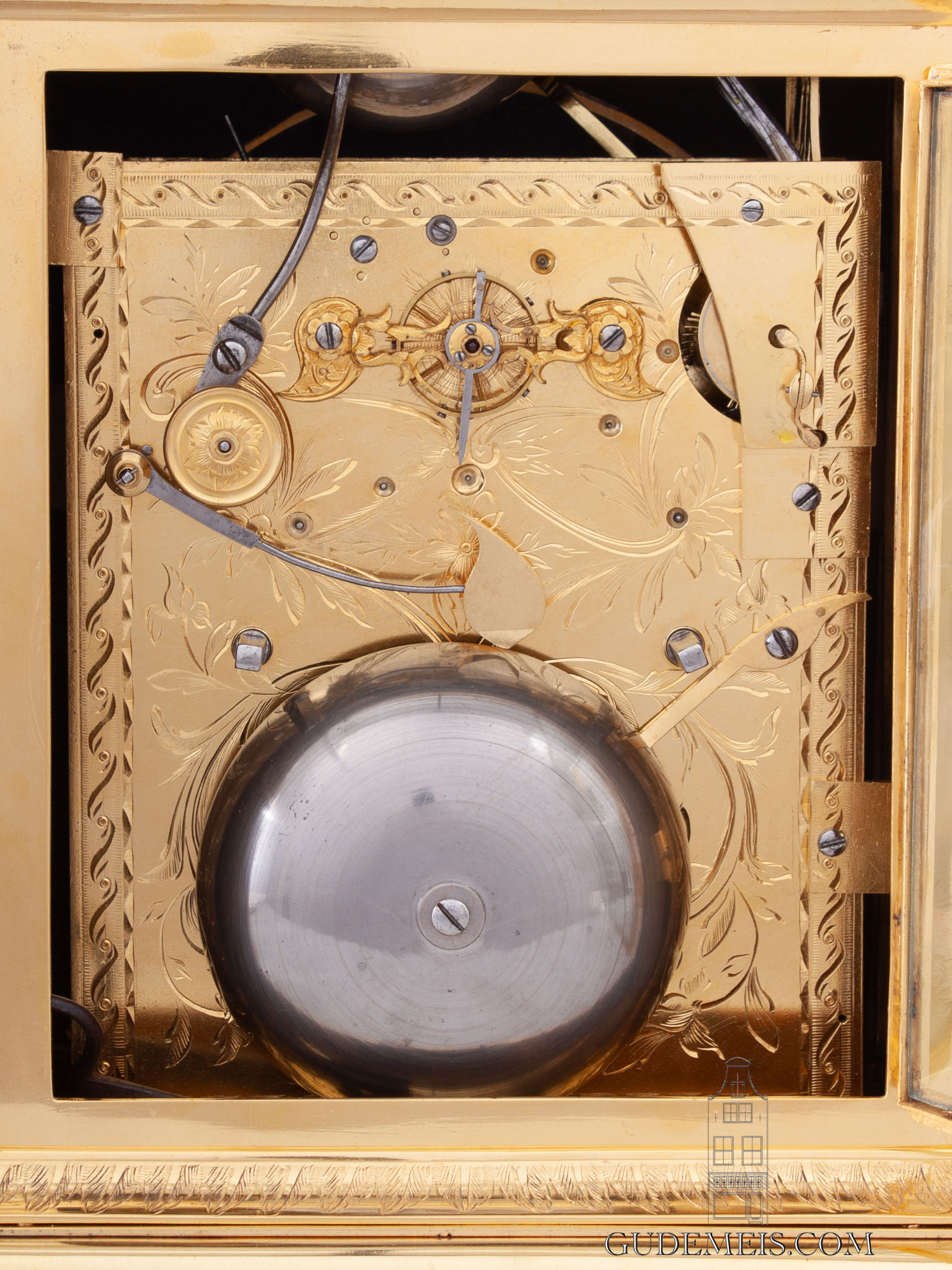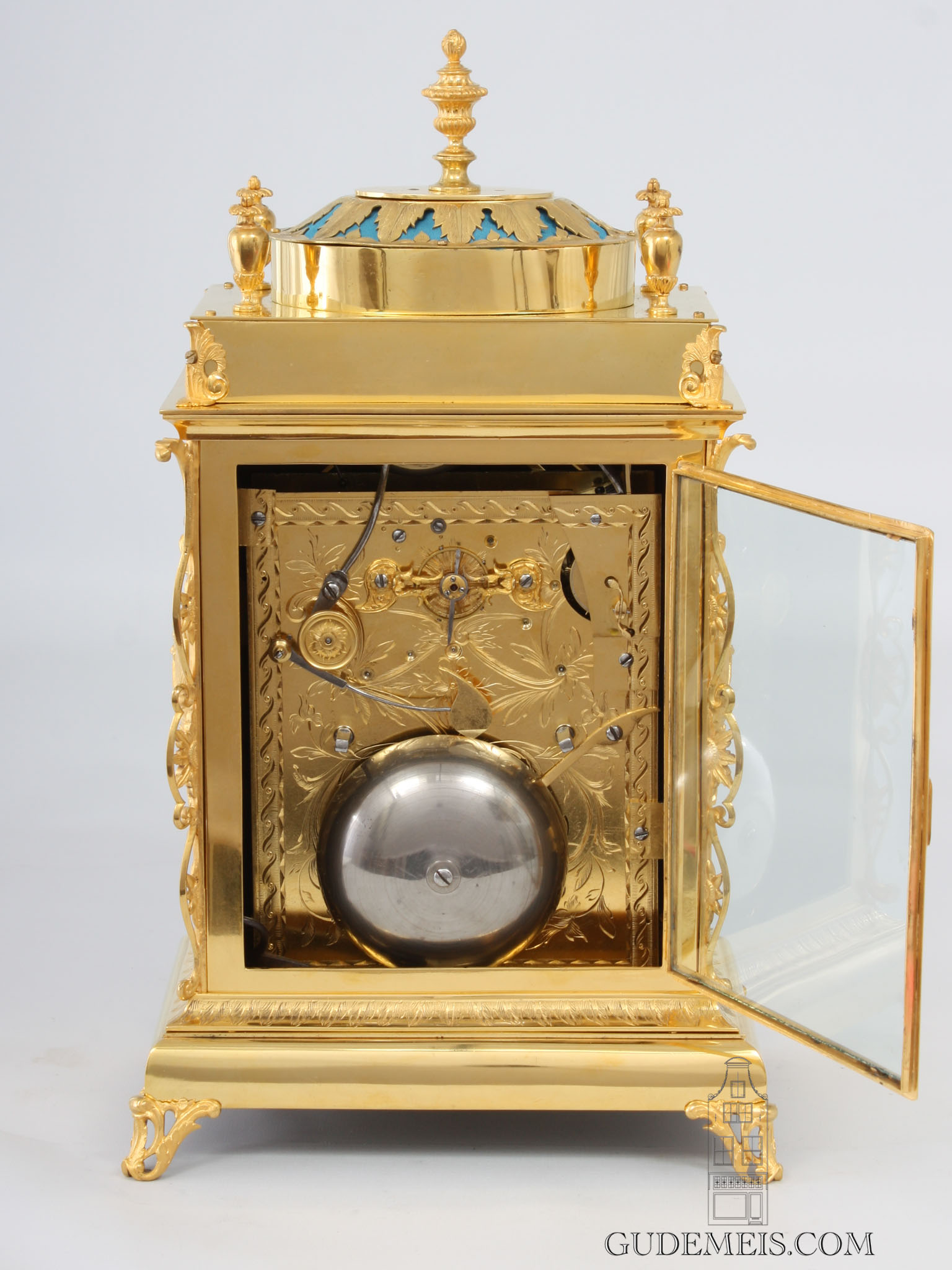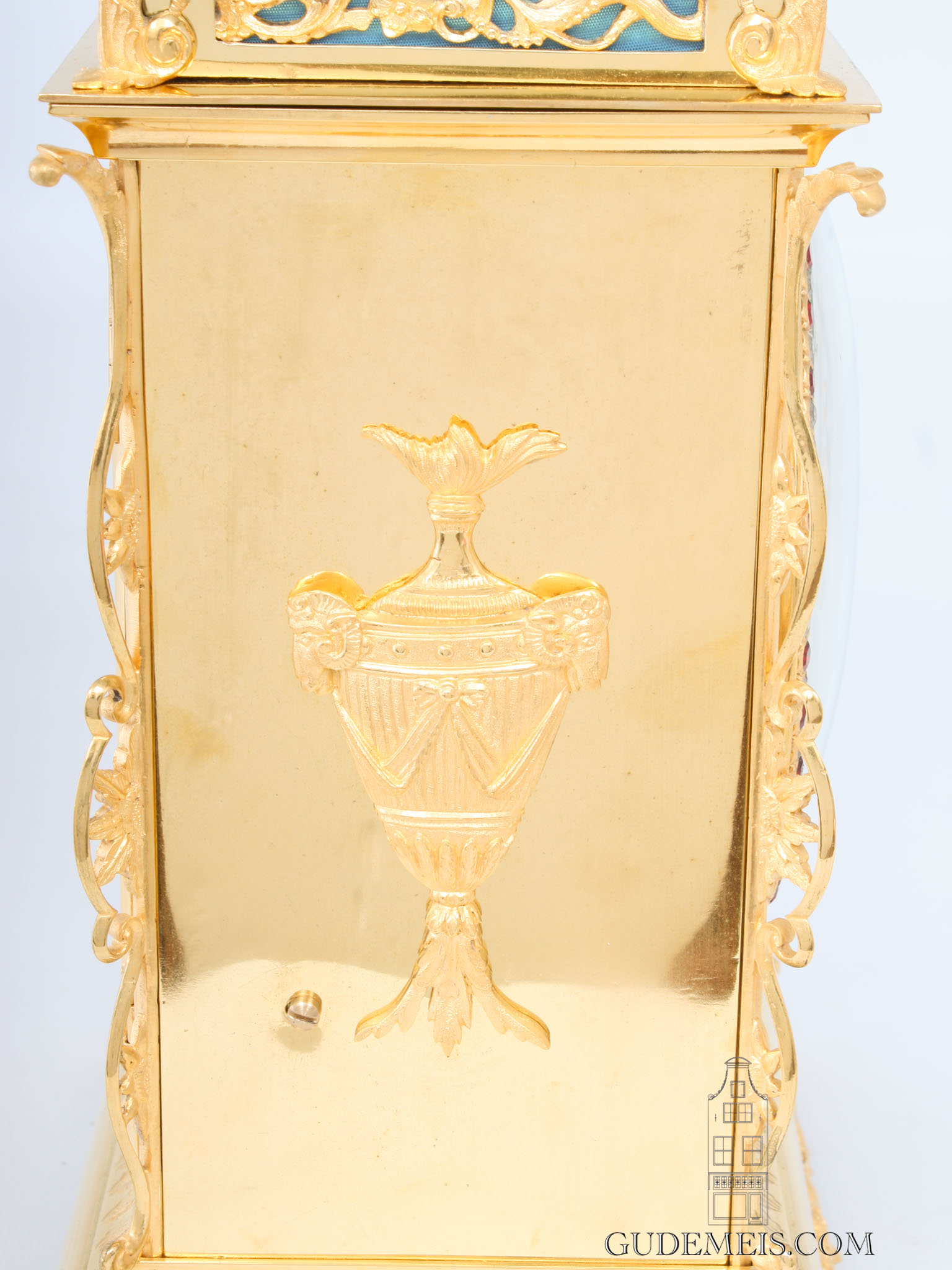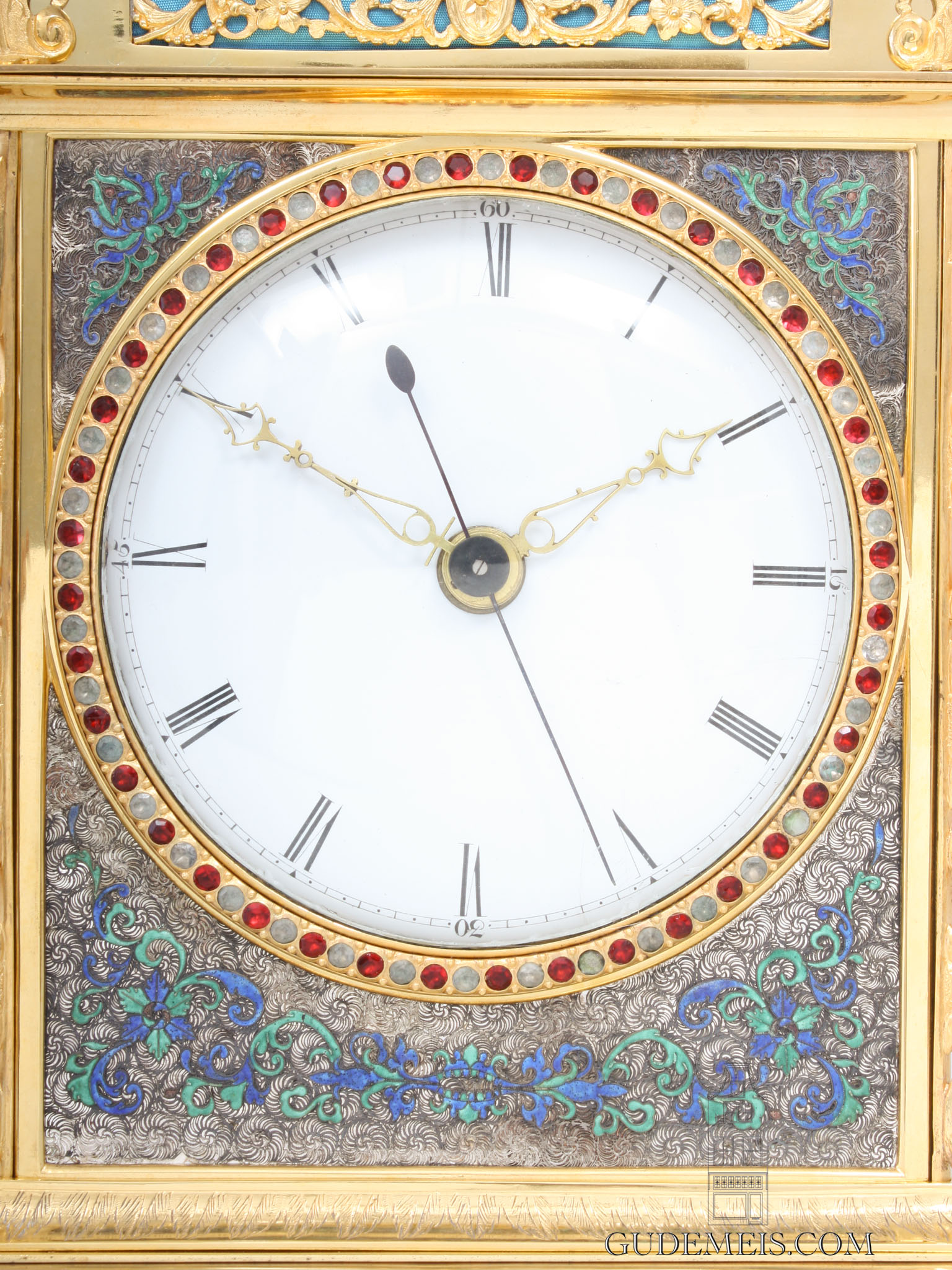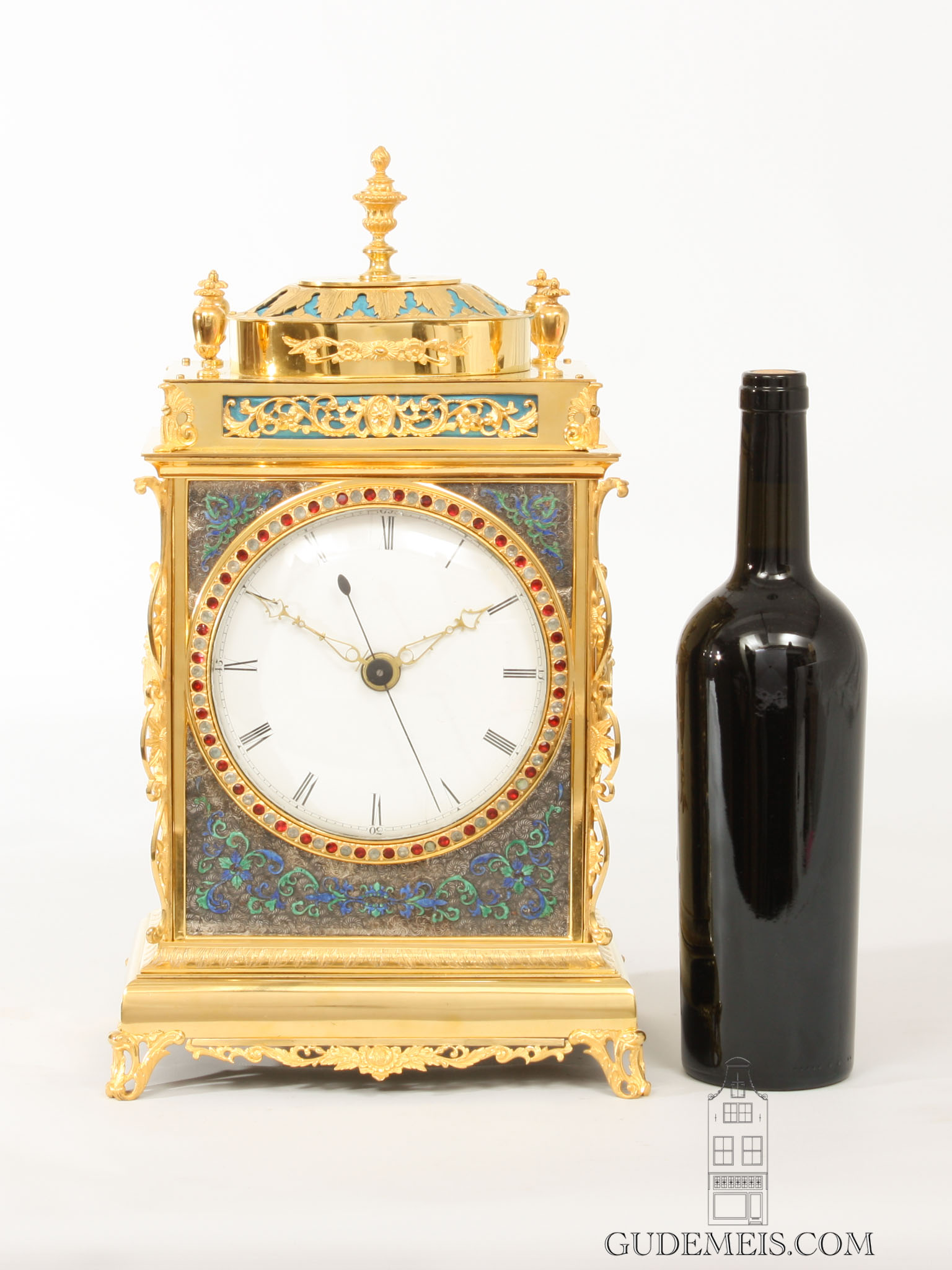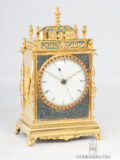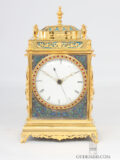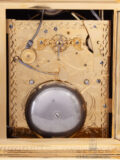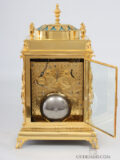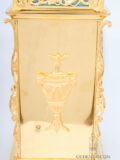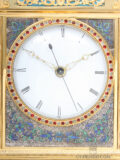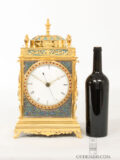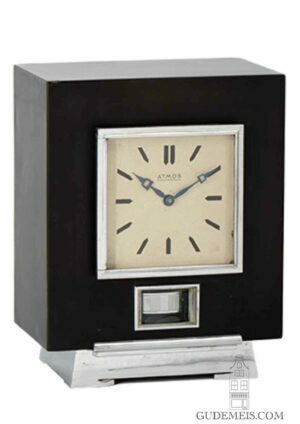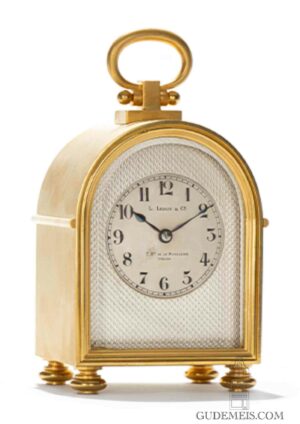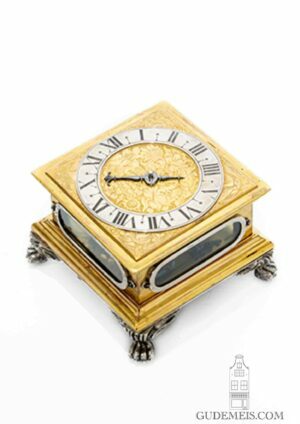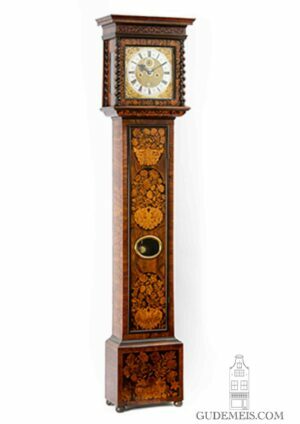A quarter chiming Chinese Guangzhou table clock, circa 1780.
Description
Guangzhou
In the first quarter of the 17th Century Emperor Wan-Li was given two clocks by an Italian priest. The emperor was so pleased with them that soon after he started to collect clocks and watches. Also the emperors after him of the Qing dynasty would be great clock collectors. Because of this a production evolved in Europe of specially made clocks for the Chinese court. The European production wasn’t large enough, the emperor was not only collecting, but clocks also proved to be great gifts. Therefore hundreds of Chinese artisans were deployed in the copying of these European clocks. Besides the Chinese workmen, European craftsmen were asked to work with and teach their Chinese colleagues. In this way, three centres of clockmaking were created of which Guangzhou was one. The quality of the clocks that were produced there in the second half of the 18th Century rivalled their English examples. Although this clock looks similar to English clocks made for the Far East, there are striking differences that show that it was made in China. There is the enamel decoration to the front of the case typical for Guangzhou and also parts and the construction of the movement are typical for this tradition.
Sweep seconds hand
The 14-cm enamel dial has Roman numerals for the hours and has Arabic quarter numbers. The pierced brass heart shaped hands are made after English design and the pseudo sweep hand is made of blued steel. I use the term ‘pseudo sweep hand’ because it doesn’t tick actual seconds. Not the precise ticking but the clear visual movement of the hand was important to show the wonderful automatic action of the mechanical clock.
Fusee and chain
The beautifully made brass movement is driven by two spring barrels in combination with fusee and chain. The movement has duplex escapement in combination with a vertical balance mounted with a beautifully engraved bridge on the back plate. The clock plays the quarters with scale melody on eight bells. The hours are struck on a single bell. The back plate is beautifully adorned with foliate engraved scrolls and is lined with a ‘walking dog’ border. The spring barrels were probably imported from England. The differently shaped parts like the pillars, fusee and chain as well as the lay out of the striking work clearly show that this movement was made in China.
Gilt brass
The ornate case is made of gilt brass. The stepped top has an oval caddy with foliate pierced frets. It is fitted between by four finials and surmounted by a larger fifth finial. The gilt bezel has red and white paste-set stones and is set in foliate silver and colourful enemal surround. The sides of the case are adorned with urn shaped mounts and there is a glazed door at the back. The engraved moulded plinth has foliate pierced mounts between the rococo feet.
Macao Time Museum
A similar clock from the collection of Huo Feile is exhibited in the Time Museum in Macao. Take a look at this clock.


